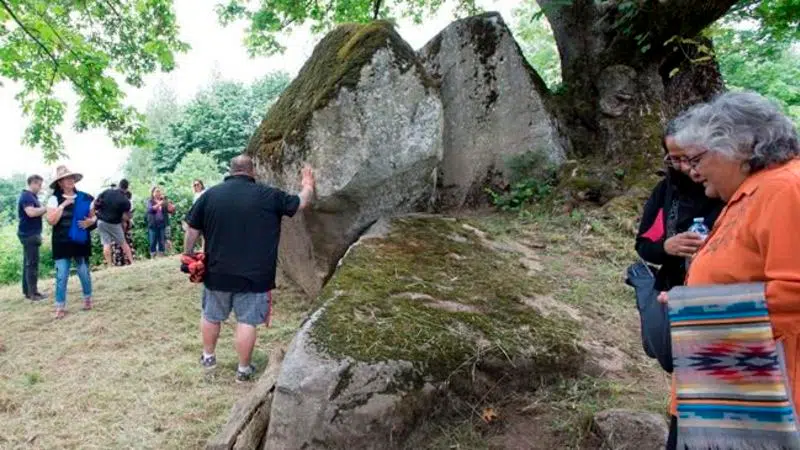
First Nations, developer call for return and protection of sacred burial site
ABBOTSFORD, B.C. — Indigenous leaders from across British Columbia and parts of the United States gathered at a sacred burial site in Abbotsford, B.C., alongside the developer who owns it, calling for its protection by the provincial government.
From a grassy plateau overlooking farmland in the Fraser Valley, Sema:th First Nation Chief Dalton Silver told those who assembled on Friday that they were standing on a mass grave.
Hundreds, if not thousands, of Sema:th and Sto:lo First Nations were killed by smallpox carried by colonists, wiping out an estimated 80 to 90 per cent of their populations, he said.
The Sema:th have been fighting for years to have the 65-hectare property known as Lightning Rock returned to them.


